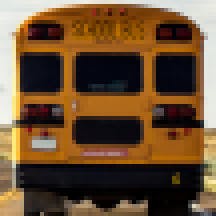This weekend, while some teachers kick their feet up to begin summer vacation, educators in Washoe, Nev. are rallying. They hope to build support for pro-education government officials who will turn the tide on district budget cuts and overcrowded classrooms.
Roberta Duvall is a Washoe County School District principal at B.D. Billinghurst Middle School. With a ratio of up to 38 students per teacher, which rose after budget cuts, her school is trying to do a lot with a little. But one of the initiatives she keeps on the top of her list is to consistently improve school climate through a focus on social-emotional learning (SEL) practices. She has pinpointed developing these skills in teachers and students.
To Duvall, it’s even more important to improve the climate of a school with overcrowded classrooms. “It is about modeling accountable talk,” she says. “It is putting [social-emotional learning practices] in place—whether you have a class of one or a class of 41.”
Improving school climate has been a priority for Duvall since 2014 when she noticed a correlation between SEL and improved academic outcomes in her school. Students began to care, she noted, after educators made topics such as writing “more personal,” often through building relationships outside of school hours. In addition, social-emotional learning practices helped her teachers address tensions that grew from a transforming student demographics, which shifted from 70 percent white when she first opened the school in 2006, to 47 percent Hispanic today.
“We are very fortunate because we have become more diverse,” explains Duvall. “But with that, we found that we really needed to address social and emotional academic development.”
B.D. Billinghurst groups kids in teams that include one counselor, academic advisory support staff and case managers. The school also instituted a full class period where students are taught social-emotional learning lessons on competencies which include developing self-management, social awareness, self-awareness, responsible decision making and relationship skills.
These changes have shown measurable results in school climate surveys, where Duvall notes indicators like “student respect” and “adult caring” have gone up from 43 to 53 percent and 75 to 80 percent respectively between 2013 and 2016. According to the district survey plan, ‘student respect’ measures how respectful students are of each other as well as teachers and staff. ‘Adult caring’ measures students’ perceptions about how much teachers and staff appear to care about them and listen to their ideas and opinions.
Additionally, Duvall says as students learn more about social-emotional competencies they give themselves much lower ratings on the skills, something she describes as an improvement in self-awareness. In other words, as students learn more about what’s expected of them in these areas, they begin to recognize their own weak spots and areas for improvement.
Focusing on Teachers
Yet one of the limitations researchers identified with the ways schools implement SEL practices is the heavy focus most leaders put on students—especially when similar expectations are not required of adults. In a 2017 research paper, Anne Gregory from Rutgers University and Edward Fergus, an assistant professor at Temple University, argue that teachers should make an effort to develop their own social and emotional competencies in order to improve their ability to foster students’ understanding of the topic and improve school climate.
“There's a presumption that lies within SEL work with kids that the adults who are invoking it have it themselves,” explained Fergus, in an EdSurge OnAir podcast interview back in April. “We have to be mindful of how we're also building that competency in those sets of adults as well."
Refocusing on teachers is something Duvall has chosen to take up on her campus. During her third year of implementing SEL practices on campus, school leadership decided to focus on developing the staff.
"To know where we were with our own management skills, our own social-emotional awareness skills and taking responsibility—it was really powerful,” says Duvall. “It makes us better educators because when we are faced with challenging situations, we know how to walk through processes and model appropriately.”
Her team has done a variety of professional development activities to build SEL competencies in teachers. In one session that Duvall describes as “powerful,” teachers gathered in a circle and responded to an essential question about their past jobs.
“The teachers have been working next to each other for the last couple of years, and they didn’t know some of these things... It was like building that personal story,” Duvall explains, noting that she has heard a range of celebratory and gut-wrenching narratives that built connections and understandings between colleagues. “I think it helped each individual to say, ‘I feel comfortable sharing,’ and that in itself is the beginning of social-emotional awareness and taking responsibility.”

Social-emotional skills support student achievement, but embedding SEL into the school day can be complex.
If you’re launching a new SEL program or enhancing an existing one, these tips will help you avoid common implementation mistakes.
“We want to give our students the same opportunity in a safe and comfortable environment,” she continues.
Yet Duvall acknowledges that promoting SEL practices in her school has been an uphill battle. Particularly as the number of students in her school’s classrooms increases, practices such as restorative justice, where educators are meant to respond to negative behavior by implementing positive reinforcements—is something she says teachers “are not that great at yet.” In addition, Duvall notes that teachers, particularly veteran ones, have been “hit” with so many different initiatives over the years they can become disillusioned when new buzzword programs such as “social-emotional learning” become popular practice.
To combat the disillusion and encourage teachers, Duvall says that she has made it a point to show educators the reasons why she adopts new ideas and takes time to show how SEL practices impact school climate and academics. She also creates safe spaces for teachers to voice their concerns.
“You have to enhance the voice in your staff,” says Duvall. “They have to be part of the decision-making. If we are asking our teachers to help build student voice, then how are we building teacher voice?”


